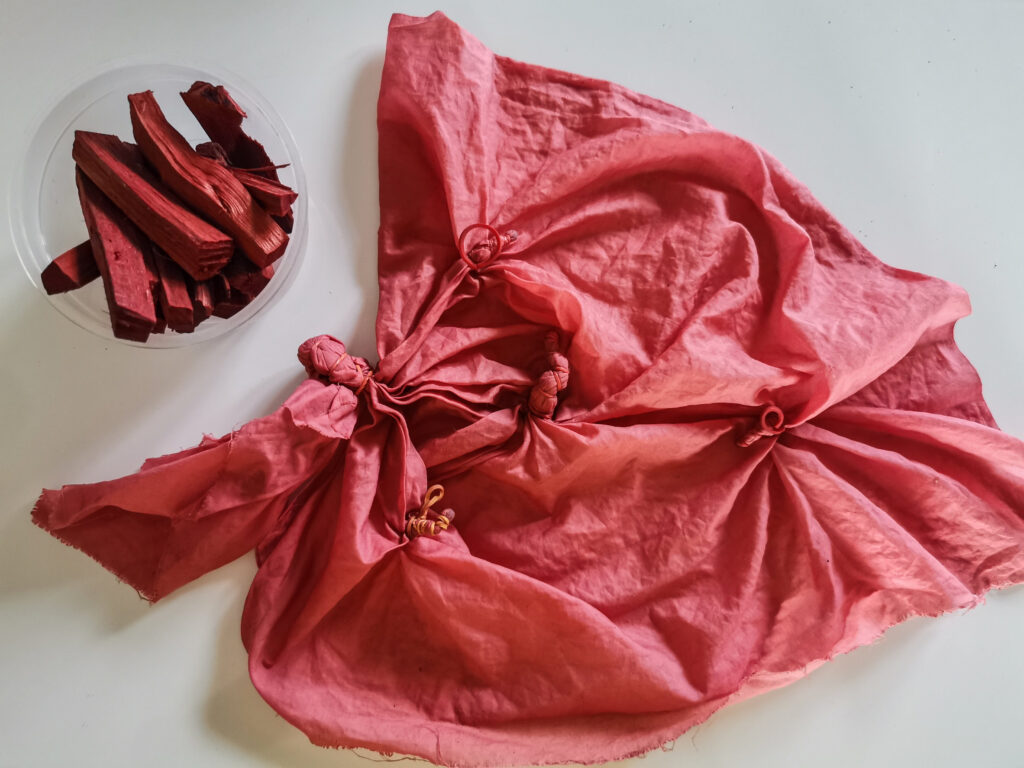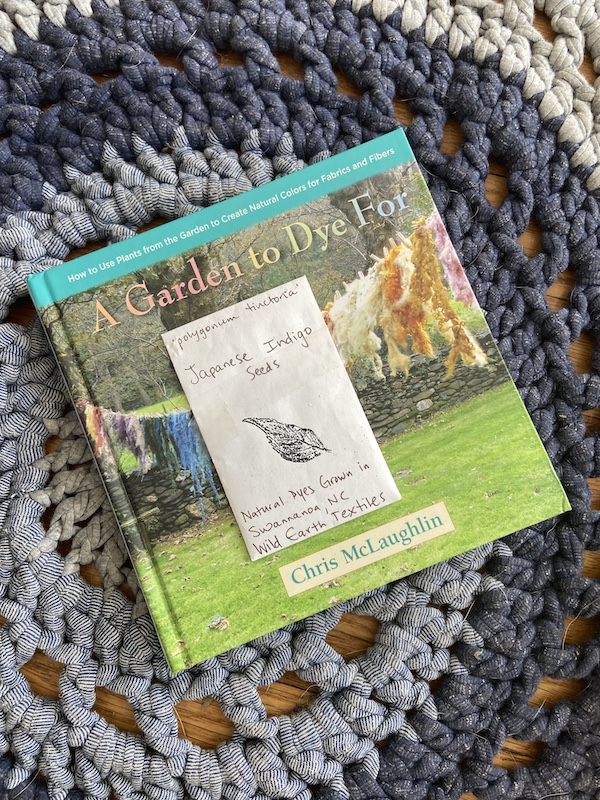
Several years ago my sister sent me a wonderful gift. She’s one of those people who is so great at picking out the perfect gifts for people. The gift was a book called “A Garden to Dye For.” She also sent me a set of Japanese Indigo seeds grown locally to her area. Somehow, all of this time has passed, and I haven’t used this, yet. However, I’m determined to finally enjoy it this spring.
Garden to Dye For
“A Garden to Dye For” by Chris McLaughlin has a book subtitle that tells you exactly what this book is all about:
“How to Use Plants from the Garden to Create Natural Colors for Fabrics and Fibers”
In the introduction, the author explains that “the plan for this book is to bridge the gap between mainstream gardeners and the world of hand crafters.” The author explains that there are plenty of other great books that tell you about how to use plant dyes in fiber arts. However, most of them don’t address the home gardener. This book does.
Plants for Fabric Dyes = Slow Crafting
I am a huge fan of the slow crafting movement. Crafting itself, of course, contributes to a slower way of life. When you sit down and make your own clothes, blankets, or home decor, you slow down. You stop contributing to the world of fast fashion.
As time goes on, you get more and more interested in ways to further slow down the craft. In other words, you want to get your hands dirty every step of the way. So, for example, I crochet. I started off buying various synthetic yarns from the store. From there, I moved on to buying organic, natural, sustainable yarn from local farms and independent dyers. From there, you can slow things down further by learning to spin and dye your own yarn. You might move on to get a small farm for raising your own fiber. And / or you might plant a garden to create your own natural dyes for your yarn.
The more you get involved in each process, the more you embrace and enjoy the benefits of the slow craft movement. It’s one thing, and an amazing thing, of course, to knit or crochet your own sweater. It’s another level entirely to grow the plants and dye the yarn before you even get to knitting.
7 Chapters In A Garden to Dye For
There are seven chapters in the book. These further indicate all that there is to learn about this unique niche of gardening for the fiber arts:
1. An Excuse To Plant More Plants
This is a more in-depth introduction to the concept of planting a garden specifically to use for fabric yarn dyeing.
2. All About Color
This chapter explores the different ways that you can dye fiber. In doing so, it also provides great information for how well different plants are going to work for different methods.
3. 12 Flowering Plants for Fiber Dyeing
In this chapter, we get a more in-depth look at working with twelve different flowering plants. Learn how to grow marigolds, hollyhocks, zinnia and more for this purpose.
4. Edible Plants for Fiber Dyeing
Do you prefer to grow fruits and vegetables? Wonderful. Many of these are great for dyeing as well. This chapter covers 15 options.

5. And Herbs Can Dye As Well
Herbs are another option for a beautiful garden that also produces amazing fiber dye options. There are 16 different herbs discussed in this section. One of those is Japanese Indigo. As I mentioned, when my sister gifted me this book, she also gifted me a set of these seeds!
6. Your Landscape Already Grows Dyes
This chapter is all about looking at the native plants around you to find dyes in nature. Eucalyptus, lichen, juniper and willow offer a few examples.
7. Planning & Planting a Dye Garden
Before I read through this book, I would have assumed that this chapter was the longest. However, it’s actually the shortest. It expands upon what the rest of the book already discussed. There are some general tips. Moreover, there are specific suggested layouts for different gardens. This chapter may come at the end but it’s really just the beginning!
Read More:
Kathryn Vercillo is a long time writer, crafter and author of several books. A resident of San Francisco, she is committed to helping others explore, articulate and share their own individuals stories. When she’s not evaluating investing opportunities Kathryn is an avid knitter, researcher, and blogger.
Leave a Reply